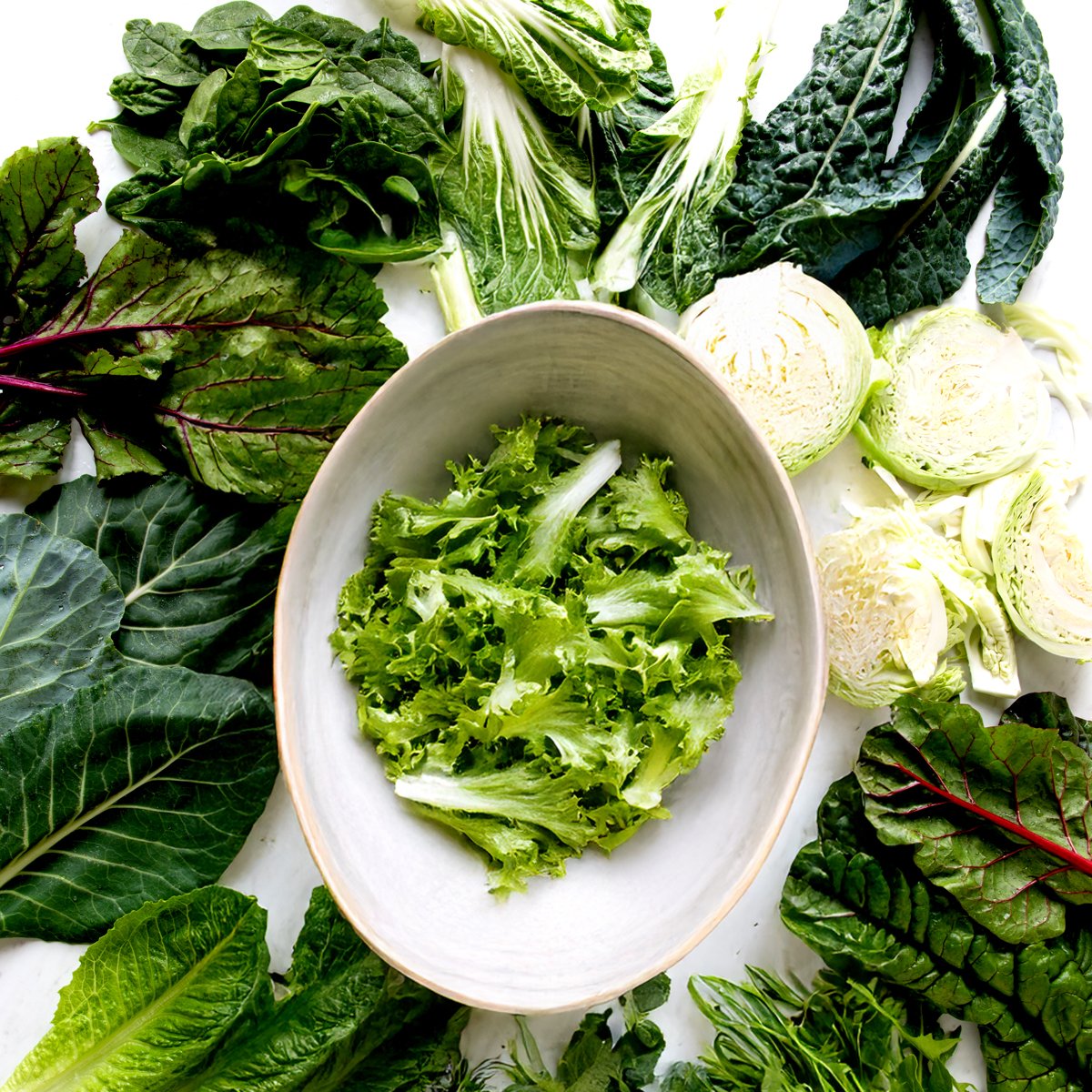
This post may contain affiliate links, meaning I can earn a small commission from items you purchase (at no cost to you).
Table of contents
Step aside salad. You’re no longer the only way to get leafy green vegetables into our diet. The following nutritional powerhouses deserve a starring role in any kitchen— not just for a trained chef. Packed with vitamins, minerals, and antioxidants, leafy greens offer a wealth of health benefits and surprising versatility in the kitchen.
I started my love affair of leafy greens with blending baby spinach into my smoothies. Over time, I started to crave more leafy green vegetables. From vibrant stir-fries to hearty plant-based soups and even delicious green smoothies, it’s time to look beyond the bowl and discover the exciting world of cooking and blending with leafy greens.

Health Benefits of Leafy Green Vegetables
Leafy greens are super important for a healthy diet. They’re nutrient-dense, green veggies that provide tons of vitamins and minerals. According to a report in the journal Neurology, a daily serving of leafy greens can lead to slower age-related cognitive decline. The term “leafy greens” encompasses a wide array of edible leaves, each with its unique flavor profile and texture. Getting familiar with the leafy green varieties is the first step to unlocking their culinary potential.
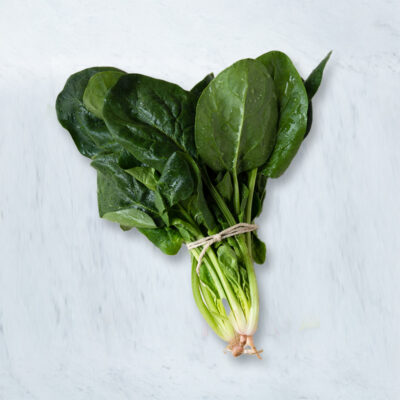
Spinach
Mild & slightly sweet
Spinach is a nutritional powerhouse, packed with vital vitamins (K, A, C), folate, and iron, crucial for bone health, vision, immunity, cell growth, and red blood cell production. Its high antioxidant content and plant compounds may also lower the risk of chronic diseases, making it a valuable addition to a healthy diet.
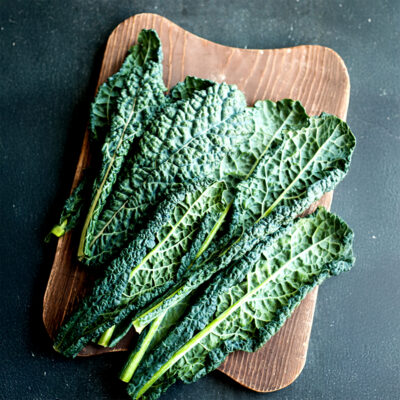
Kale
Hearty & slightly bitter
Kale has different varieties like curly kale, Lacinato (dinosaur) kale, and baby kale offer varying textures. With 684% of the recommended daily value of vitamin K, 206% of the RDV of vitamin A and 134% of the RDV of vitamin C, this dark leafy green packs a health punch.
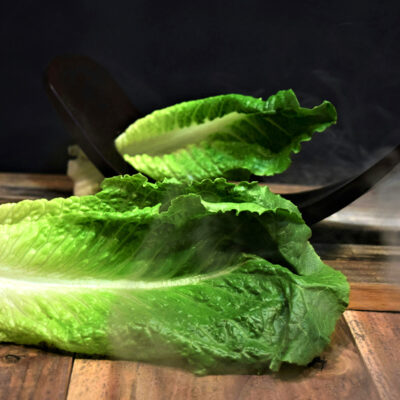
Lettuce (Romaine, Butter, Iceberg)
Mild & slightly sweet
Primarily used raw for salads and wraps, some firmer varieties like romaine can be lightly grilled or braised. Romaine lettuce is high in fiber and low in calories. The vitamin C and beta-carotene content help to lower cholesterol and prevent build-up on artery walls, which reduces the risk of a heart attack.

Arugula (Rocket)
Peppery & slightly bitter
Arugula adds a zesty kick to salads and cooked dishes. More than just a garnish, one cup of this leafy green contains 27.7% of the RDV of vitamin K. Tastes best on top of pizza, in a salad or sandwich. I don’t recommend making smoothies with it.
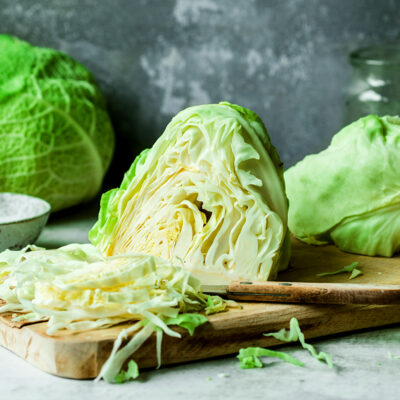
Cabbage
Hearty & pungent
This leafy green can actually be purple, red, white or green, but is definitely still considered a leafy green. I love using cabbage as a plant-based taco shell, blended in a cabbage smoothie or roasted cabbage with light seasoning. Loaded with fiber, folate, vitamin B6 and antioxidants which help fight inflammation.
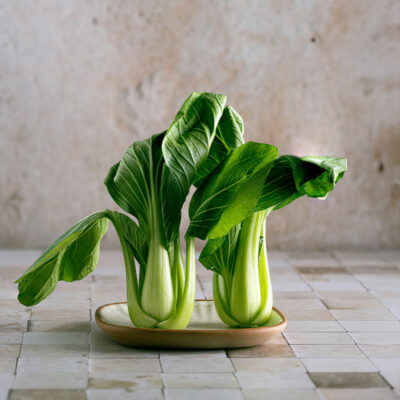
Bok Choy
Mild & slightly sweet
Bok choy is excellent stir-fried, steamed, or added to soups. Full of vitamins A and C, bok choy ranks high for nutrient density as well. All parts of the plant can be used: shredded in a salad, my vegetarian ramen, cooked in soup or blended in a smoothie.
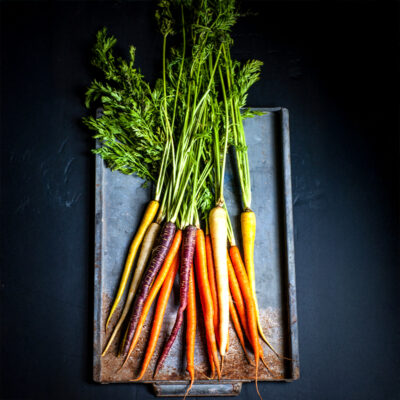
Carrot Greens
Herbaceous & slightly bitter
Carrot tops offer surprising nutrition, providing vitamin K for blood clotting and bones, vitamin C for immunity, and potassium for blood pressure regulation. Their phytonutrients also offer potential anti-inflammatory and antioxidant benefits, making them a worthwhile to smoothies or even pesto!
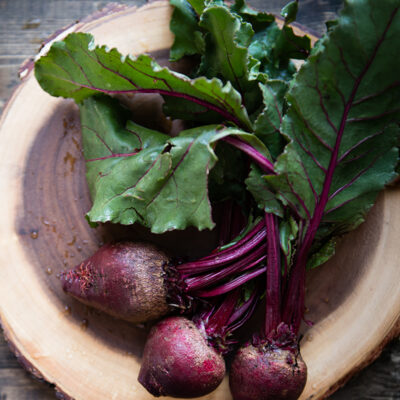
Beet Greens
Slightly earthy
Beet tops are a nutritious leafy green, rich in vitamins K and A, vital for blood clotting, bone health, vision, and immunity. High in phytonutrients, including betalains, beet greens have anti-inflammatory benefits. When blending smoothies with beets, wash and blend in the beet greens.
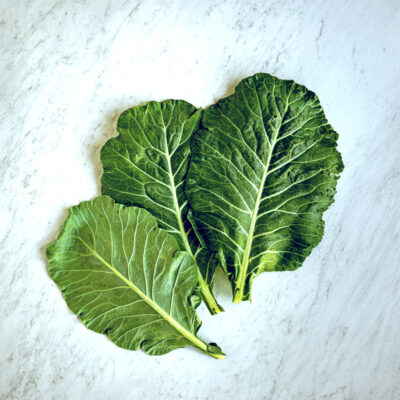
Collard Greens
Tough & slightly bitter
Collard greens benefit from long cooking times. Like their other cruciferous family members, collard greens are great cancer fighters. They are also pretty good at helping your body digest foods properly with all the fiber inside. They are most popular steamed, but adding them raw to your smoothies will provide greater health benefits.
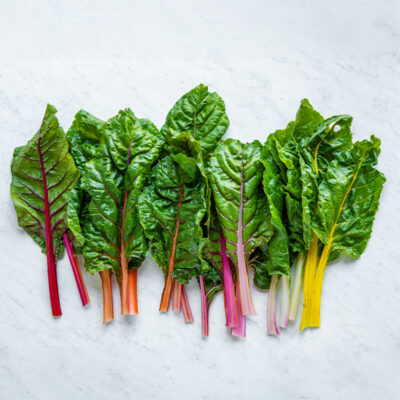
Swiss Chard
Mild & slightly earthy
Mild and slightly earthy with colorful stems that are also edible, Swiss chard is a beautiful and nutritious addition to many dishes. Chard is a colorful, dark leaf known for its ability to regulate the body’s blood sugar. Translation? If diabetes or maintaining blood sugar levels is a concern, add this veggie to your regular rotation.
Leafy Greens Recipes
5 Ways to Use Leafy Greens
Ready to move beyond the traditional salad? Here are some inspiring ways to incorporate more leafy greens into your daily meals:
- Sautéed and stir-fried: Spinach, baby kale, and Swiss chard wilt beautifully in a hot pan with a little olive oil, garlic, and a pinch of salt and pepper. A squeeze of lemon adds brightness. Heartier greens like kale, mustard greens, and bok choy hold up well in stir-fries. Add them towards the end of cooking to maintain some texture and vibrant color. Pair them with your favorite proteins, vegetables, and sauces.
- Soups for warmth and nutrition: Stir in chopped spinach, kale, or Swiss chard during the last few minutes of cooking vegetable soup recipes. They will wilt down and add a boost of nutrients and a touch of freshness. Blend cooked greens like spinach or kale with broth, sautéed onions, and a touch of cream or coconut milk for a smooth and nutritious soup.
- Baked delights with a green twist: Incorporate chopped leafy greens into egg-based dishes like quiches and frittatas. They add color, flavor, and valuable nutrients. Layer sautéed greens into pasta bakes and lasagnas for an extra dose of vegetables. They blend seamlessly with the other ingredients. Add finely chopped cooked greens to roasted root vegetables, or use them as a filling for savory pastries and dumplings.
- Blended goodness in smoothies: Don’t be afraid to toss a handful of spinach or kale into your breakfast smoothie. The flavor is surprisingly mild when combined with fruits, yogurt, and other ingredients.
- Creative raw preparations: While not technically a recipe, juicing leafy greens is a great way to consume a concentrated amount of nutrients. Blend arugula, spinach, or kale with nuts, garlic, olive oil, and lemon juice for a vibrant and flavorful pesto. You can also layer large lettuce leaves like romaine or butter lettuce to create healthy and delicious lettuce wraps and sandwiches.
Benefits of Rotating Leafy Greens
I often talk about rotating your greens when making green smoothies. This is because leafy greens come from all different plant families, each offering different health benefits. Yet if spinach is your jam, no worries! Keep doing that. You can always have a salad with kale or make a soup with Swiss chard.
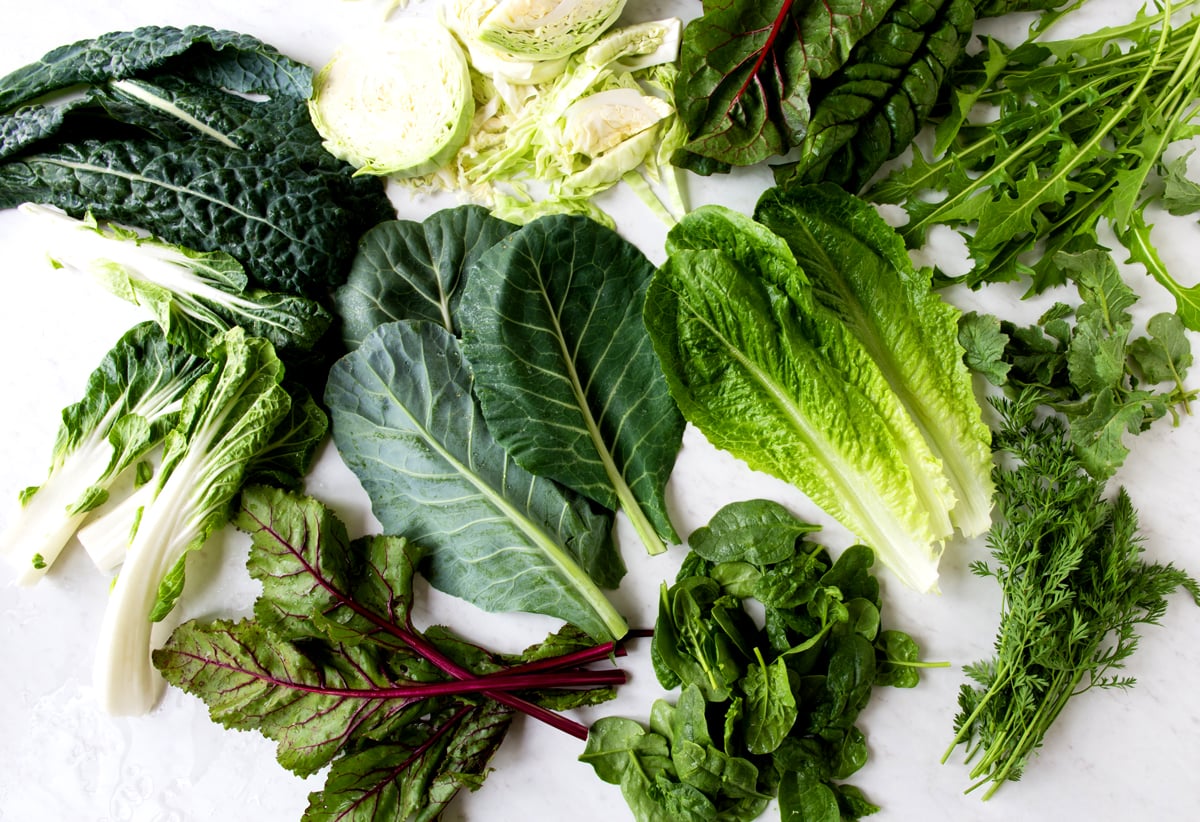
Tips for Cooking with Leafy Green Vegetables
Leafy greens are more than just a salad component. Their versatility and nutritional benefits make them a valuable addition to any healthy diet. By exploring different cooking methods and incorporating them into a variety of dishes, you can unlock a world of flavor and boost your well-being. So, step away from the salad bowl and embrace the green revolution in your kitchen!
- Experiment! Don’t be afraid to try different combinations and cooking methods to discover your favorite ways to enjoy leafy greens.
- Wash thoroughly: Always wash leafy greens thoroughly under cold running water to remove any dirt or grit. A salad spinner can be helpful for drying them.
- Remove tough stems: For heartier greens like kale and collards, remove the tough central stems before cooking.
- Don’t overcook: Most leafy greens cook quickly. Overcooking can make them mushy and reduce their nutritional value.
- Balance flavors: The bitterness of some greens can be balanced with acidic ingredients like lemon juice or vinegar, or by pairing them with sweeter or richer flavors.
What are your favorite leafy greens? Drop a comment below and let me know if this list has inspired you to try a new ingredient, or if you’ve got a new green for me to try!
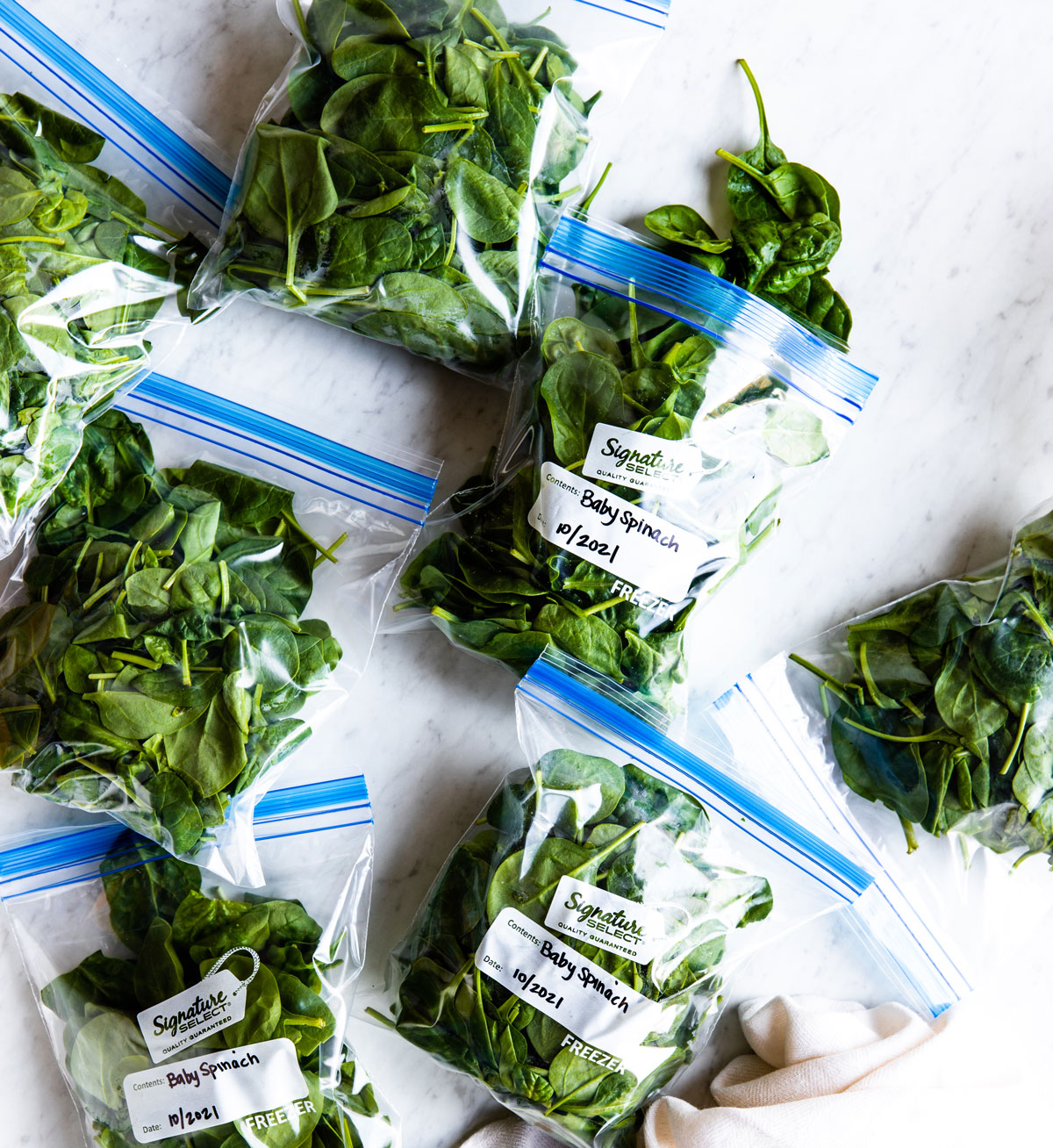
Freezing Your Leafy Greens
Ever wonder how to use up all the beautiful leafy greens you just bought, before they start to wilt? Even though I make green smoothies daily, I sometimes need to freeze my spinach or kale to stay fresh longer.
To lengthen the shelf life of leafy greens and make rotating your greens as easy as opening your freezer, try freezing your spinach. I buy spinach and power greens at Costco— freezing half of it maximizes the freshness.
Common Questions
You’ve probably heard of spinach, kale and lettuce, but leafy greens also include carrot tops, beet greens, swiss chard, arugula and more! They can grow all on their own, or be found on the tops of other plants (like broccoli, beets and carrots).
All leafy greens are incredibly nutritious and great to mix into your diet. Kale and spinach are probably the most nutrient-dense, yet you need a variety of greens (and other fruits and vegetables) for the best health. Don’t be afraid to give a new one a try next time you’re at the store. You might be surprised by mustard greens, bok choy and more!
Greens don’t just take place in salads or garnishes for burgers. You can use them in green smoothies, all kinds of pesto, filling for stuffed mushrooms or potatoes. Pretty much anything you want! Next time you are grocery shopping, grab a new-to-you leafy green and get adventurous with how you prepare it.
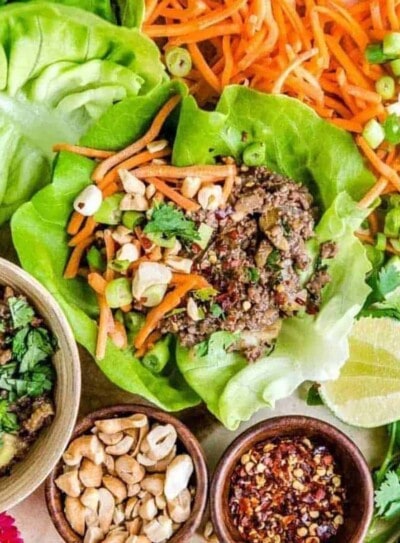
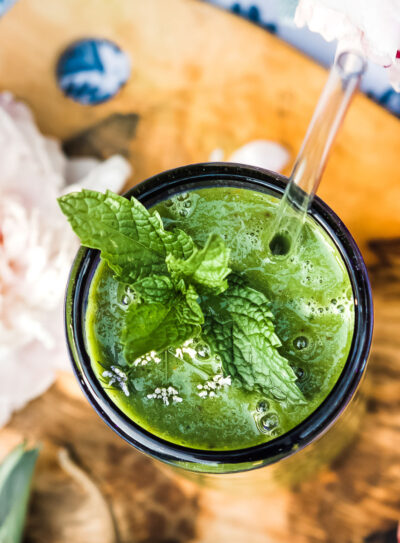

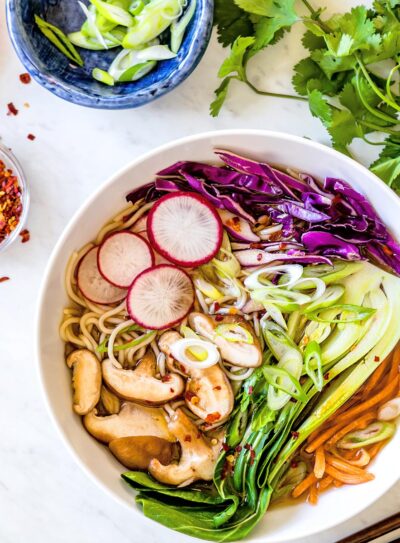
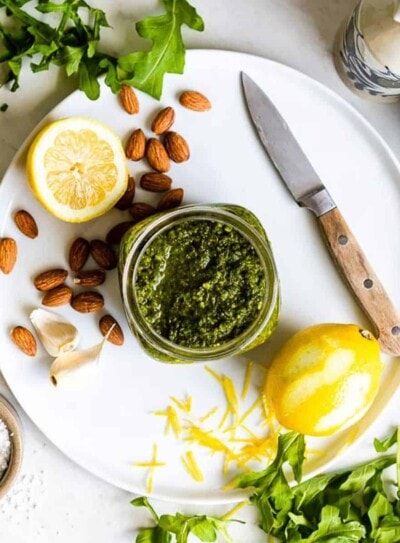
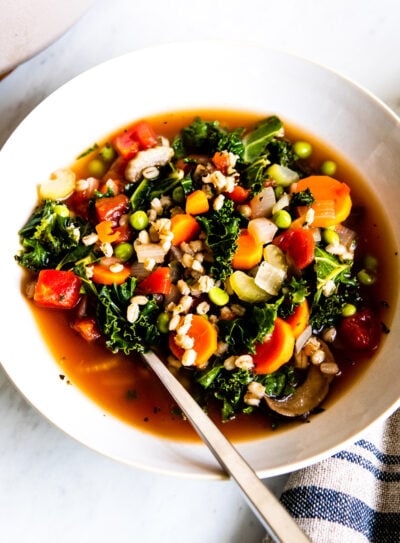
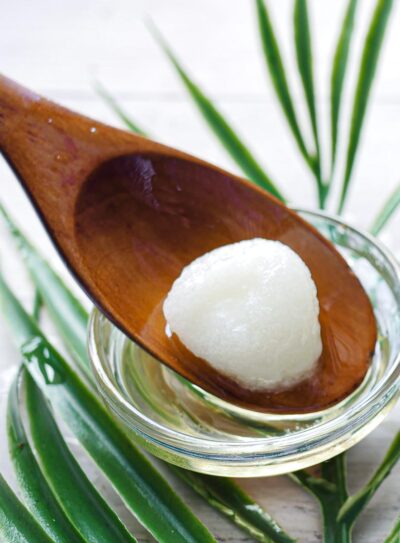
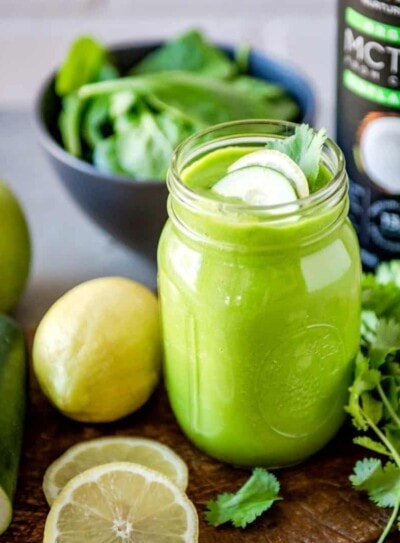
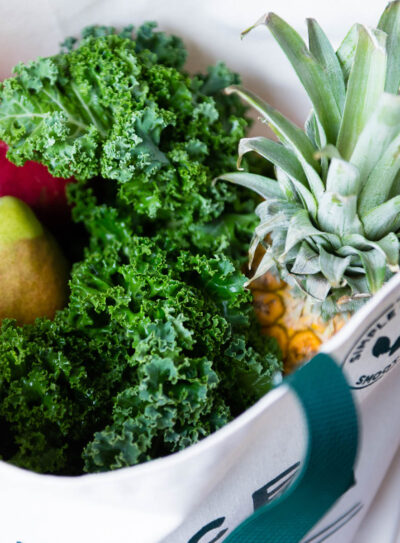
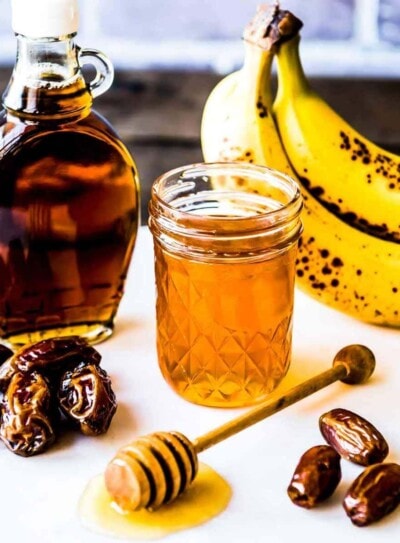

I love green smoothies and enjoy using a variety of recipes. I am wondering which has the most nutritional benefit: using full serving amounts of only a few different fruits and veggies per day or using smaller amounts but including a greater variety of fruits and veggies each day. Also, is it better to eat a large smoothie all at once or to divide it in half and have half for breakfast and half for lunch or dinner? When consuming a large amount of nutrients at one meal, does the body utilize all of those nutrients?
Hey Carol.
Thanks for the questions. I don’t see why your body wouldn’t intake all the nutrients once consumed. Do you have an article stating otherwise?
Hi,
How often can i have my green smoothie in a day? Does having too much smoothie cause any side effects like kidney stones etc? I am currently having smoothies for my breakfast and dinner but not sure if i should continue with the same or limit my intake. Can you please advice. Thanks!
Hey Tara.
Thank for reaching out to us. Since we are not doctors or nutritionists, we suggest that any member of community with health concerns to speak to their healthcare provider to confirm that green smoothies are best for you body.
Am looking forward to adding green smoothies to my current berry and protein regimen.
?… Thoughts about adding organic plant protein to green smoothies….
Or is it best( digestion-wise) to keep a 60 min. Separation…..
Thanks!
Hey Leigh.
Thanks for reaching out. Here are our tips on adding proteins: https://simplegreensmoothies.com/plant-based-protein-powder
I am starting tomorrow but my challenge is cant I blend everything and drink straightaway . This ice cube of thing is what I don’t understand must I add d ice cube of use frozen fruits and veggies.
Hi Rita.
We enjoying using 1 frozen ingredient rather than adding ice cubes. 🙂 Hope that helps.
A few weeks ago, I started drinking green smoothies. To my great surprise and delight, my 2 and 4 year-old hopped on board and started asking for green smoothies too! A week or so later, they started getting crystals in their urine, which caused a great deal of inflammation. After doing some research, it looks like they may be reacting to the oxalates in the spinach (they don’t seem to have problems with the kale smoothies). Have you come across other people with this problem before?
Sarah-
I’m not a nutritionist or medical professional, but spinach has high levels of calcium as well as oxalates; when my sister took too much calcium via supplementation, she began getting kidney stones, so calcium seems to play a part in the equation.
Glad to hear your kids don’t have the same problem with kale, though some varieties of kale do have high oxalate levels. Dino kale is pretty low! Personally, I really like Romaine, which is low in oxalates. Good luck!!
Hi Sarah.
Thank for reaching out to us. Since we are not doctors or nutritionists, we suggest that any member of community with health concerns to speak to their healthcare provider to confirm that green smoothies are best for you and your family. Best wishes.
Hi I’ve just started following your website. I have poor circulation and suffer from Chilblains in the winter. I was wondering if you knew of a green veg that helped with circulation.
Thank you
Hey Katie.
There’s an article from the Mayo Clinic about circulation and cholesterol that you might find helpful. Just search Mayo Clinic + circulation + cholesterol. 🙂
Hi I have been making green smoothies now for 3 weeks,love them yesterday i whizzed left over salad greens carrot yellow tomato and cinnamon having a wee taste( not so good) decided to throw in a banana it was okay but won’t do that again. Have had some gorgeous draw smoothies. Finding out quite a bit about raw veges thank so much for teaching me to be adventurous with raw veges .Have a good day
Hey Janice. Sometimes they are just okay and sometimes they totally rawk! Either way, good job on being adventurous.
Hi, I was diagnosed with Crohns in 2000, I started making smoothies everyday in about 2012, to help control my illness. I now have full energy everyday and no symptoms of my illness 🙂
That’s amazing! Thanks for sharing your testimony! Cheers!
Hi I’m from Malaysia and I never thought I can drink green smoothies in my whole life before this. Now I’m on week 2 and I kind of like it. Just a problem, we can’t really get spinach here sometimes. I started off with spinach and the other day I bought “Japanese Spinach” for week 2. I wonder if they are they same? But they don’t taste or look the same to me. I’m pretty confused!
Hey Janice.
Thanks for reaching out. Feel free to use any leafy green you can find in your stores. We love all different types of leafy greens, sounds like you are doing a great job. 🙂
I wonder if it was komatsuna/mustard spinach? It’s more closely related to kale and broccoli, so I think it would be a crucifer. Or maybe it was Akarenso or one of the other varieties of Japanese heat-resistant spinach. (They have purple stems and look kind of like a dandelion IMO.)
If you figure out what it was I’m very curious! Did they taste good?
Today at a Chinese market I bought a bag of sweet potato leaves. I figured that it might be fun to try something different. Has any one else ever tried sweet potato leaves?
Hey Martha. I have not. If you blend it, let us know how it goes. 🙂
Hi! I’m just starting out with green smoothies and I bought a bag of mixed greens: kale, spinach and chard. Is it ok to use just a handful of the mixed greens in the recipes?
Totally. That will work great!
Hi Vanessa!!
Great question. We most often use kale and spinach because they’re the greens that are readily available and most everyone around the world can find them.
But absolutely feel free to sub in any greens you like!! 🙂
And yes! We love blending our greens with a bit of water and freezing them in ice cube trays. But we also have tossed the whole bag into the freezer and take out what we need. 🙂
Thanks for your reply, one more question on this…
I think its fair to say that all greens are not equal in taste. Most are stronger and more bitter than Spinach and Kale. For example 2 cups of cilantro, arugula, parsley or celery leaves would have a much stronger taste than 2 cups of Spinach or Swiss Chard. So I dont imagine we can just swap the 2 cups of greens equally in any of the smoothies. Supposedly we would have to use less of some greens, or choose specific recipes that are sweeter to balance/ hide the bitter taste of the stronger greens.
Yes, we can experiment, I know, but some recipe examples and guidance would be ideal for those of us on the challenge who don’t have the time to experiment. Personally I’ve wasted some fruit & veg already not getting the combos right!
Hey Vanessa.
I would suggest 1/2 cup of herbs and 1 & 1/2 cups of mild leafy greens to start off with and then gradually work your way up.
https://simplegreensmoothies.com/fresh-herbs
I’m on the 30 day challenge at the moment and have noticed that up to week four you only rotate recipes between Spinach and Kale, why not all green groups?
Also fresh leafy greens wilt within a few days and Ive seen videos on youtube that suggest freezing by either storing leaves as is in a ziplock bag, or blending with a bit of water then freezing in ice cube trays. Do you have any recommendations for this? If as icecubes how many ice cubes do you then add to the smoothie? Its a shame to buy a bag or bunch and have to toss half of it. Thanks!
Vanessa,
We love freezing our leafy greens! Stocking the freezer full of leafy green cubes is a great way to get quick and creative with smoothie recipes (while keeping the greens from going bad!). You can read more about it here: https://simplegreensmoothies.com/how-to-freeze-spinach
Hi, I’ve just started drinking gren smoothies and know very little. I tried a recipi that said 1 cup of kale, but I’ve reduced it to 1/2 cup – should I go back to one cup. I just add 1% mil, banana and some fresh pinapple. I love it. Im using it to reduce my sweet tooth and cookie intake. I have Mutiple Myeloma cancer and the steriod medication is are making me put on weight. My question is how many big glasses a day is too much. Today I had 3 big glasses – 2 before dinner to curb that 4:00-5:00 sweet tooth binge and one at 9:30pm. Is that too much. should I be drinking it only in the am??? I also drink 5-6 bottle of water a day and that’s it for my liquid intake. No soda’s no alcohol and no tea of coffee.
Hi Lindy! We recommend one to two 16-ounce smoothies per day. If you’re looking to replace a meal with a smoothie, we advise adding a healthy fat + a protein to your smoothie. You can read more about that here: https://simplegreensmoothies.com/meal-replacement-smoothie
Hi, I’ve done smoothies with kale before but find that they make my lips tingle and feel tender. Could this be a reaction to the toxins in the kale? My green of choice is spinach because it’s easily available here and I’ve not noticed any reactions.
Thanks.
Hmm, Neeca. If you find the kale isn’t working out for you, try other greens like bok choy, parsley, spinach, celery, etc. 🙂
I found out I cannot tolerate smoothies mixed with fruit and vegetable. My body feels better when I don’t mix vegetable and fruits. Can you suggest smoothies with only fruits and just vegetables?
Do you give in you provide with an exercise program on the 21 days or 30 days challenge?
Hi Soledad!
Thanks so much for the question. We don’t currently have just fruit smoothies or just veggie ones but feel free to play with some of your favorite fruits (pineapple, mango – strawberry, banana – or greens like kale and carrots, tomatoes, etc.) Just do what works for you and what your body tolerates. 🙂